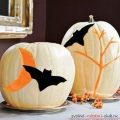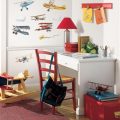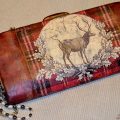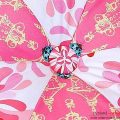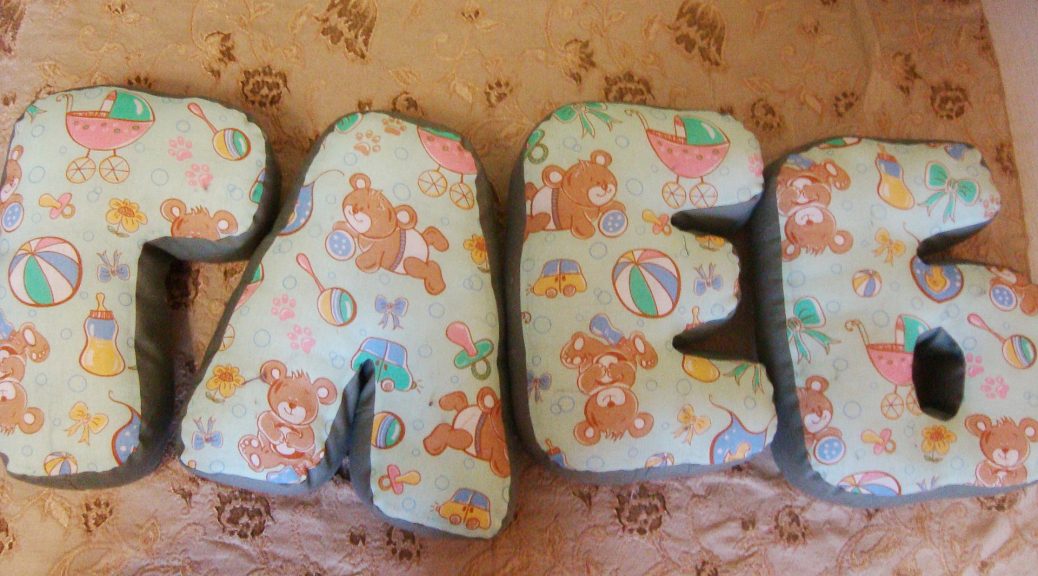
How to make volumetric letters of the child's name from cloth and sintepon? With the help of letters you can decorate a baby's room or congratulate him on a holiday
Not so long ago, it was fashionable to decorate the nurseryroom or bedroom of the newlyweds with names of sewn letters. Such inscriptions are easy to make with your own hands, having a sewing machine or enough patience to create handmade seams, and also there must be flaps of matter. Nominal inscriptions are created from any color of matter of different quality, even the shape of the letters is chosen individually, comparable to any font. Another plus of home-made room decorations is that you can create them in any size, according to the parameters of the wall, bed or chest. 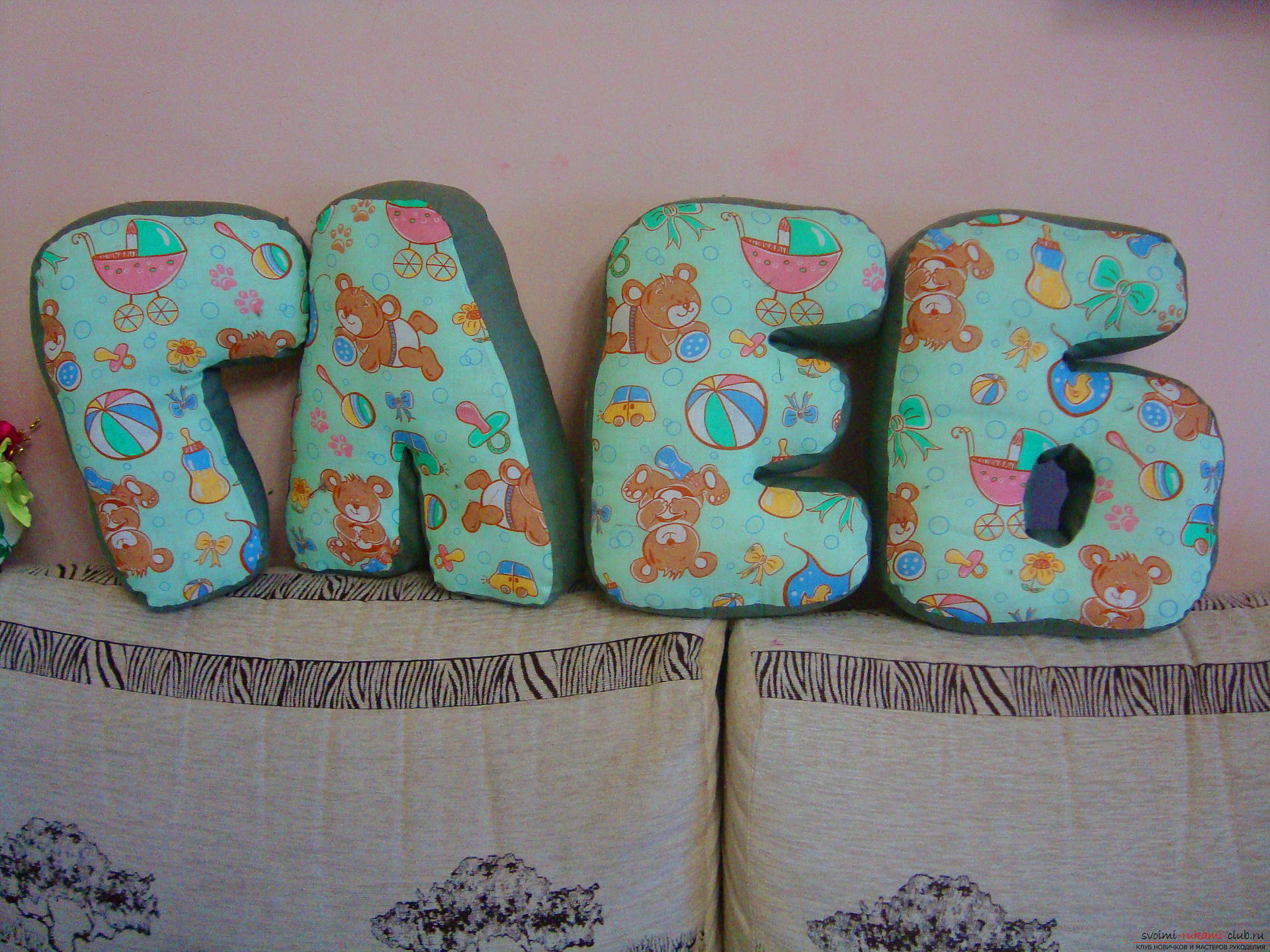 The key role in the individuality of this decorplays not only a set of characters that make up your name, but also their color. After all, you can make the letters blue, salad, with flowers or polka dots, that is all that will suit your mood or fits the design. The quality of the material can be any, but still it is not recommended to use organza, chiffon, because this fabric is not only transparent, but also quickly dissolves in the seams area. Therefore, stop the choice of coarse calico, chintz, cotton, velvet. The colors of these materials are a million, they are durable, comfortable, pleasant to touch when touched, and they can be washed in warm water without any problems. For each detail, the amount of matter corresponding to its size is expended, but in a double, since each letter has a front and back. Still need a strip of fabric for the side of each element, it is desirable to choose it in another contrasting color. The width of this strip directly depends on the volume of letters, so choose it in the range of 5 to 15 centimeters. Another thing is to prepare a sintepon or cotton wool, another filler that will help to fill letters, give them the desired shape and volume. Do not use cellophane, because it produces an unpleasant creak. Paper is also not suitable, because it can quickly crumple, crumble and the product will lose shape, another paper filler is impractical with respect to washing. For each letter you need a pattern. It can be done in at least two ways - the first is to print the font you like in large format, that is, for the name "Arisha" on separate sheets you need to print the letters: a, p, u, w, there is no sense in printing the second "a", because the template for the first letter is suitable. It should be borne in mind that the font should be of sufficient width so that the details do not come out thin and incomprehensible. The second way is to draw letters in pencil on a piece of paper. Fantasy drawings are not suitable here, it is necessary to draw wide letters without unnecessary branches, zagulins, etc., because such elements are extremely difficult to translate into reality when stitching details and stuffing them with synthepon. The drawn templates of letters must be cut out and applied to the flap of matter folded in doubles to create the front side of the souvenir letter and its underside. The cut out parts are by no means sewn together. In the next step, from another matter, cut out a strip with straight edges, the width of this strip from five centimeters or more, the larger the strip, the more massive and nicer all the details. Next, sew a strip and one part of the letter, with the front parts of the elements superimposed on each other. The seam extends 3-4 mm from the edge. If you do not have a sewing machine, then you can make a dense mark with your hands, using a thread folded in half.
The key role in the individuality of this decorplays not only a set of characters that make up your name, but also their color. After all, you can make the letters blue, salad, with flowers or polka dots, that is all that will suit your mood or fits the design. The quality of the material can be any, but still it is not recommended to use organza, chiffon, because this fabric is not only transparent, but also quickly dissolves in the seams area. Therefore, stop the choice of coarse calico, chintz, cotton, velvet. The colors of these materials are a million, they are durable, comfortable, pleasant to touch when touched, and they can be washed in warm water without any problems. For each detail, the amount of matter corresponding to its size is expended, but in a double, since each letter has a front and back. Still need a strip of fabric for the side of each element, it is desirable to choose it in another contrasting color. The width of this strip directly depends on the volume of letters, so choose it in the range of 5 to 15 centimeters. Another thing is to prepare a sintepon or cotton wool, another filler that will help to fill letters, give them the desired shape and volume. Do not use cellophane, because it produces an unpleasant creak. Paper is also not suitable, because it can quickly crumple, crumble and the product will lose shape, another paper filler is impractical with respect to washing. For each letter you need a pattern. It can be done in at least two ways - the first is to print the font you like in large format, that is, for the name "Arisha" on separate sheets you need to print the letters: a, p, u, w, there is no sense in printing the second "a", because the template for the first letter is suitable. It should be borne in mind that the font should be of sufficient width so that the details do not come out thin and incomprehensible. The second way is to draw letters in pencil on a piece of paper. Fantasy drawings are not suitable here, it is necessary to draw wide letters without unnecessary branches, zagulins, etc., because such elements are extremely difficult to translate into reality when stitching details and stuffing them with synthepon. The drawn templates of letters must be cut out and applied to the flap of matter folded in doubles to create the front side of the souvenir letter and its underside. The cut out parts are by no means sewn together. In the next step, from another matter, cut out a strip with straight edges, the width of this strip from five centimeters or more, the larger the strip, the more massive and nicer all the details. Next, sew a strip and one part of the letter, with the front parts of the elements superimposed on each other. The seam extends 3-4 mm from the edge. If you do not have a sewing machine, then you can make a dense mark with your hands, using a thread folded in half. 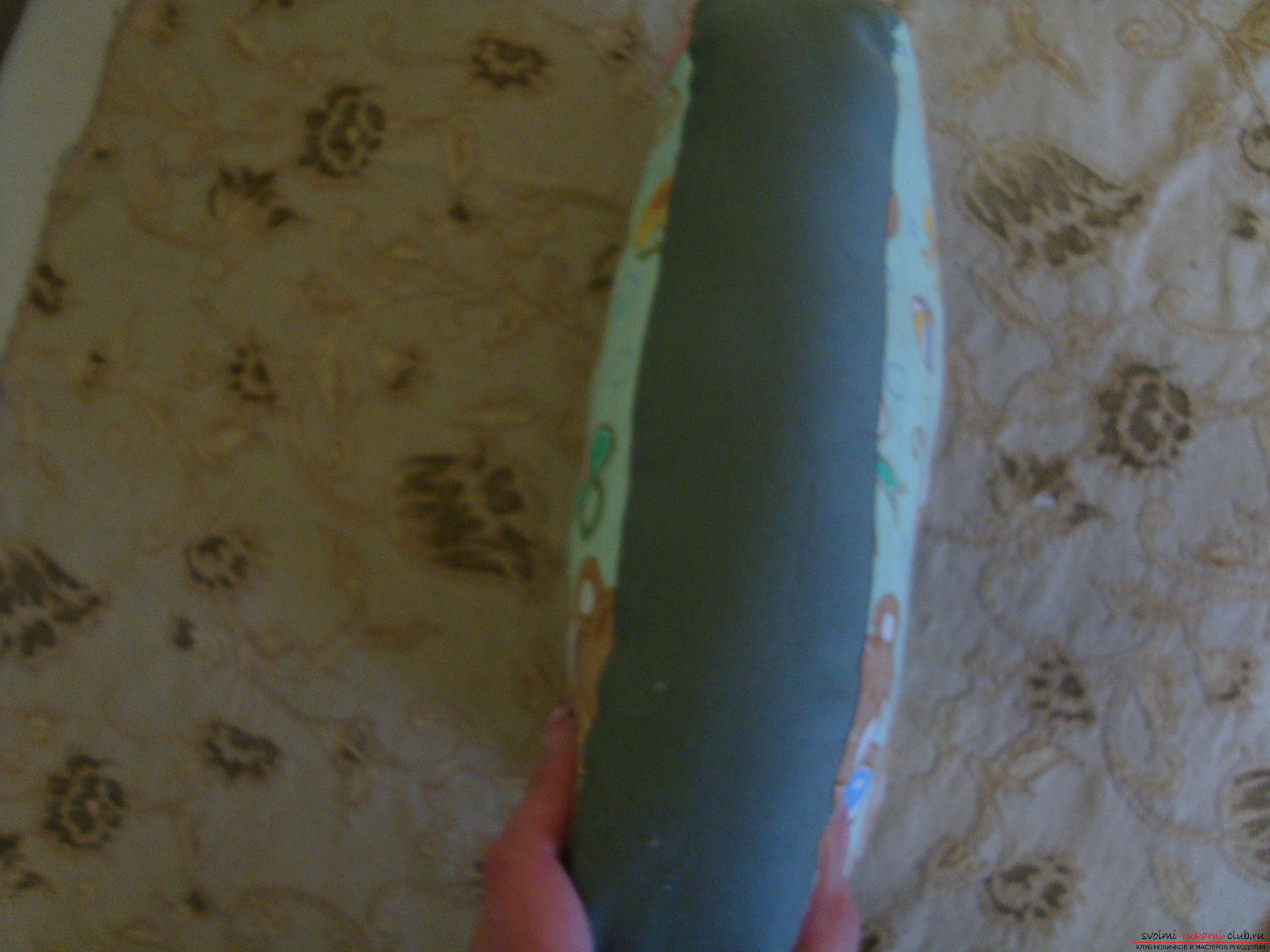 It is necessary not to sew the horizontal lower sides of theletters, through these slots the product will be turned out on the front side. In these places, the insert will also be sewn, but the seam is located across it, it must be thin and barely noticeable. The second template piece in the form of a letter is sewn in a similar way to a transverse strip of a different fabric. In this case, too, do not sew the bottom edges of each letter element.
It is necessary not to sew the horizontal lower sides of theletters, through these slots the product will be turned out on the front side. In these places, the insert will also be sewn, but the seam is located across it, it must be thin and barely noticeable. The second template piece in the form of a letter is sewn in a similar way to a transverse strip of a different fabric. In this case, too, do not sew the bottom edges of each letter element. 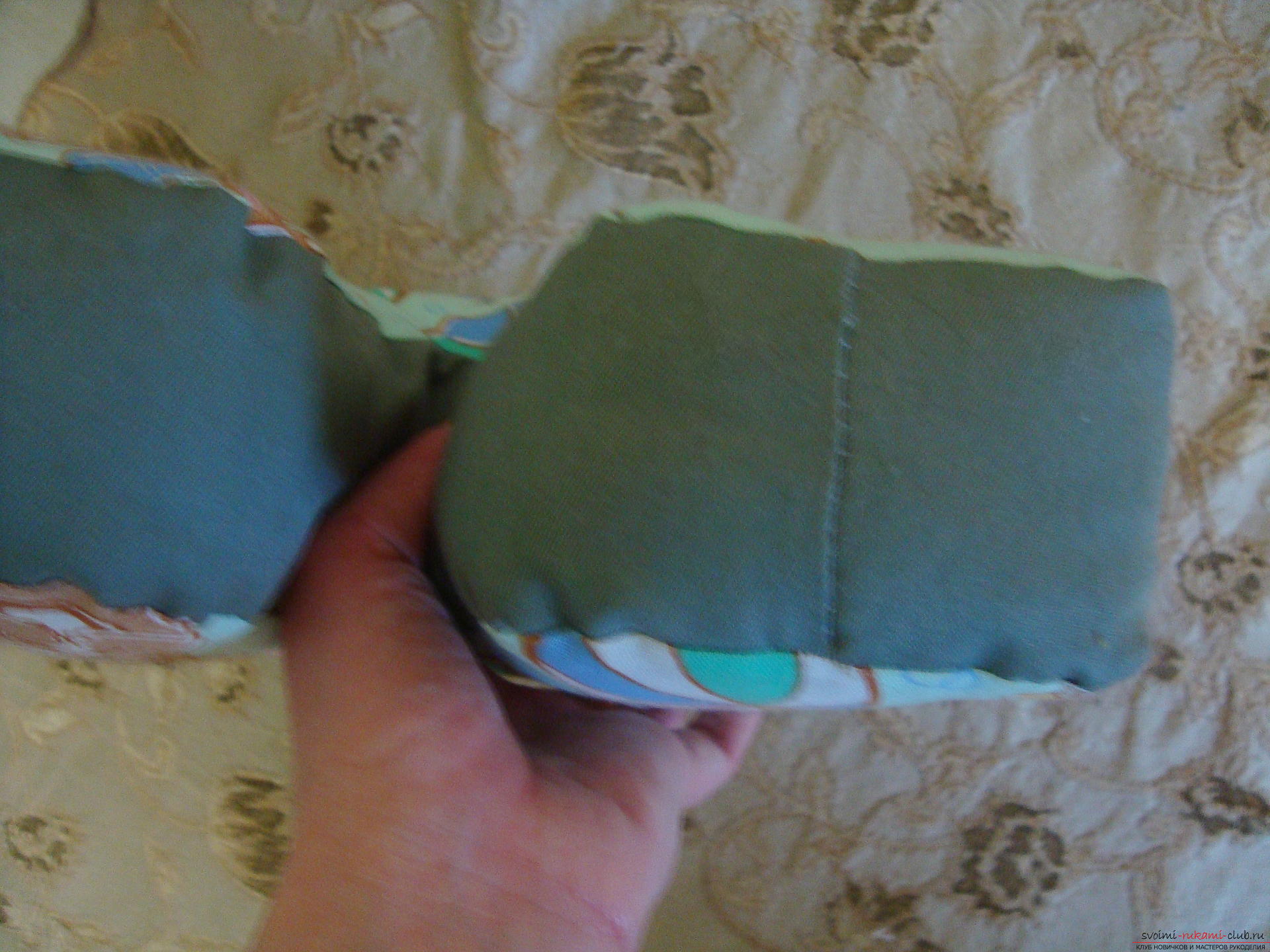 In the next step, remove all the details ascovers, to look outward facing. For convenience, you can use a wooden long stick (from Chinese cuisine, or a large pencil). It is very important to spread out all the corners in each cloth letter so that they are carefully filled with soft material in the future. Now you need to fill the letter covers with some filler. For example, use unnecessary scraps of cloth, or old cotton wool. The most attractive letters are obtained when filling with a sintepon, because it is rather light, soft, tender and quickly without any compulsion takes any form, it is well stuffed into corners. Fill in the covers of letters gradually, first try to cram the sintepon into the farthest edges, then tightly fill the middle. The lower edge should be filled with a soft filler well, try not to fall outside the line of the future seam.
In the next step, remove all the details ascovers, to look outward facing. For convenience, you can use a wooden long stick (from Chinese cuisine, or a large pencil). It is very important to spread out all the corners in each cloth letter so that they are carefully filled with soft material in the future. Now you need to fill the letter covers with some filler. For example, use unnecessary scraps of cloth, or old cotton wool. The most attractive letters are obtained when filling with a sintepon, because it is rather light, soft, tender and quickly without any compulsion takes any form, it is well stuffed into corners. Fill in the covers of letters gradually, first try to cram the sintepon into the farthest edges, then tightly fill the middle. The lower edge should be filled with a soft filler well, try not to fall outside the line of the future seam. 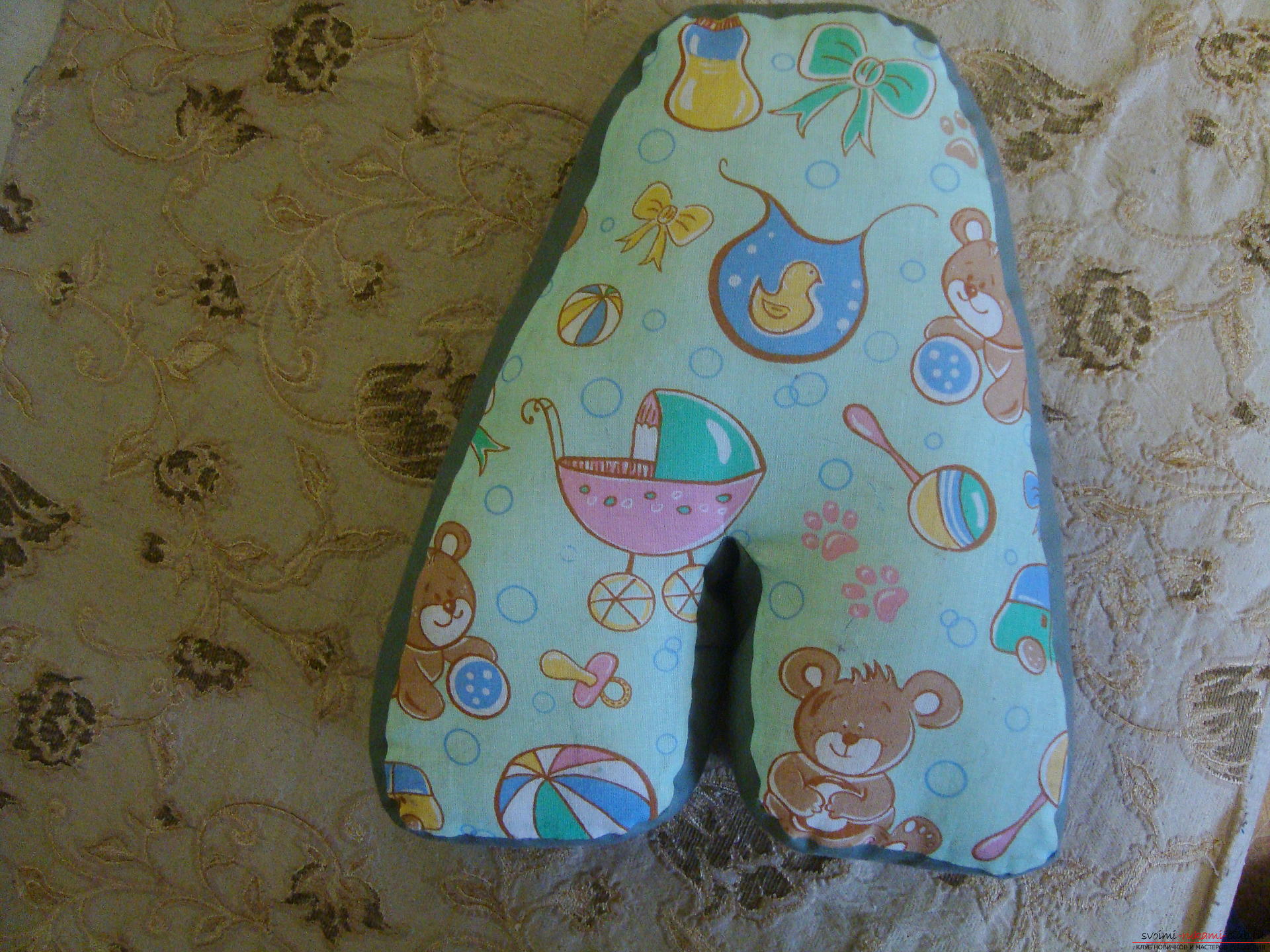 Now you need to sew the lower sections of souvenir letters. At first, the transverse tape is sewn to one template, then the filler recovers, the edges are turned inward and the last seam is sewn. Interesting and unusual letters are ready to decorate your room. They can be fixed over the baby's bed or laid over the sofa. Sometimes these letters are sewn small windows of dense film, you can put funny pictures or bright pictures.
Now you need to sew the lower sections of souvenir letters. At first, the transverse tape is sewn to one template, then the filler recovers, the edges are turned inward and the last seam is sewn. Interesting and unusual letters are ready to decorate your room. They can be fixed over the baby's bed or laid over the sofa. Sometimes these letters are sewn small windows of dense film, you can put funny pictures or bright pictures.  The color of the letters does not always have to be monophonic, theircan be combined with shades. For example, the marginal letters in the name of the princess will be brightly crimson, and then the color becomes less saturated toward the center, and the middle of the book becomes gently pink.
The color of the letters does not always have to be monophonic, theircan be combined with shades. For example, the marginal letters in the name of the princess will be brightly crimson, and then the color becomes less saturated toward the center, and the middle of the book becomes gently pink.

